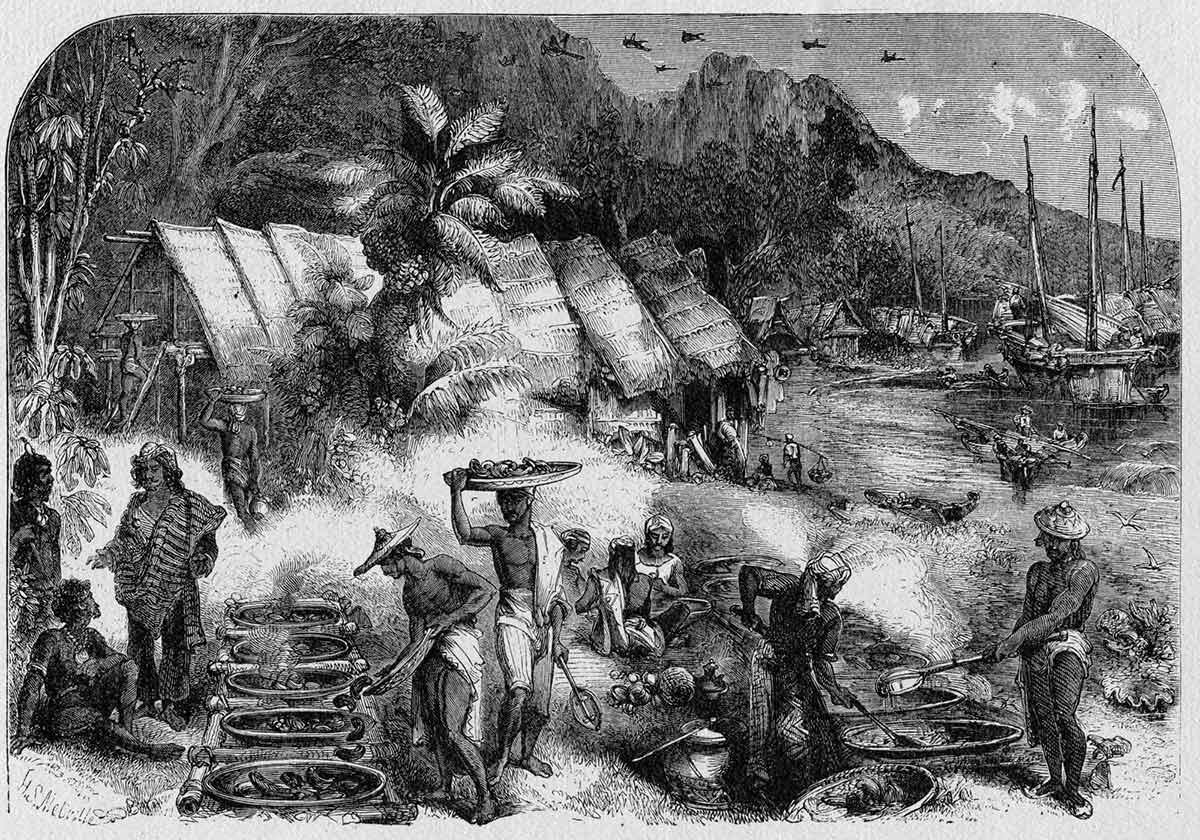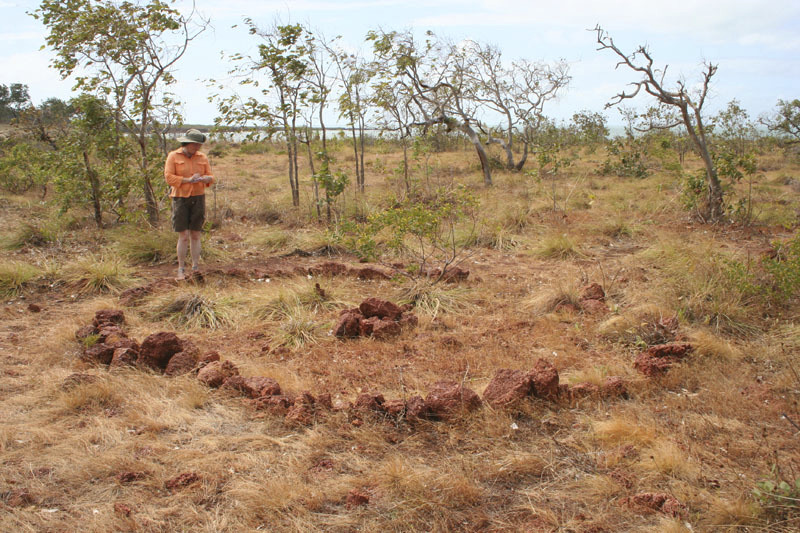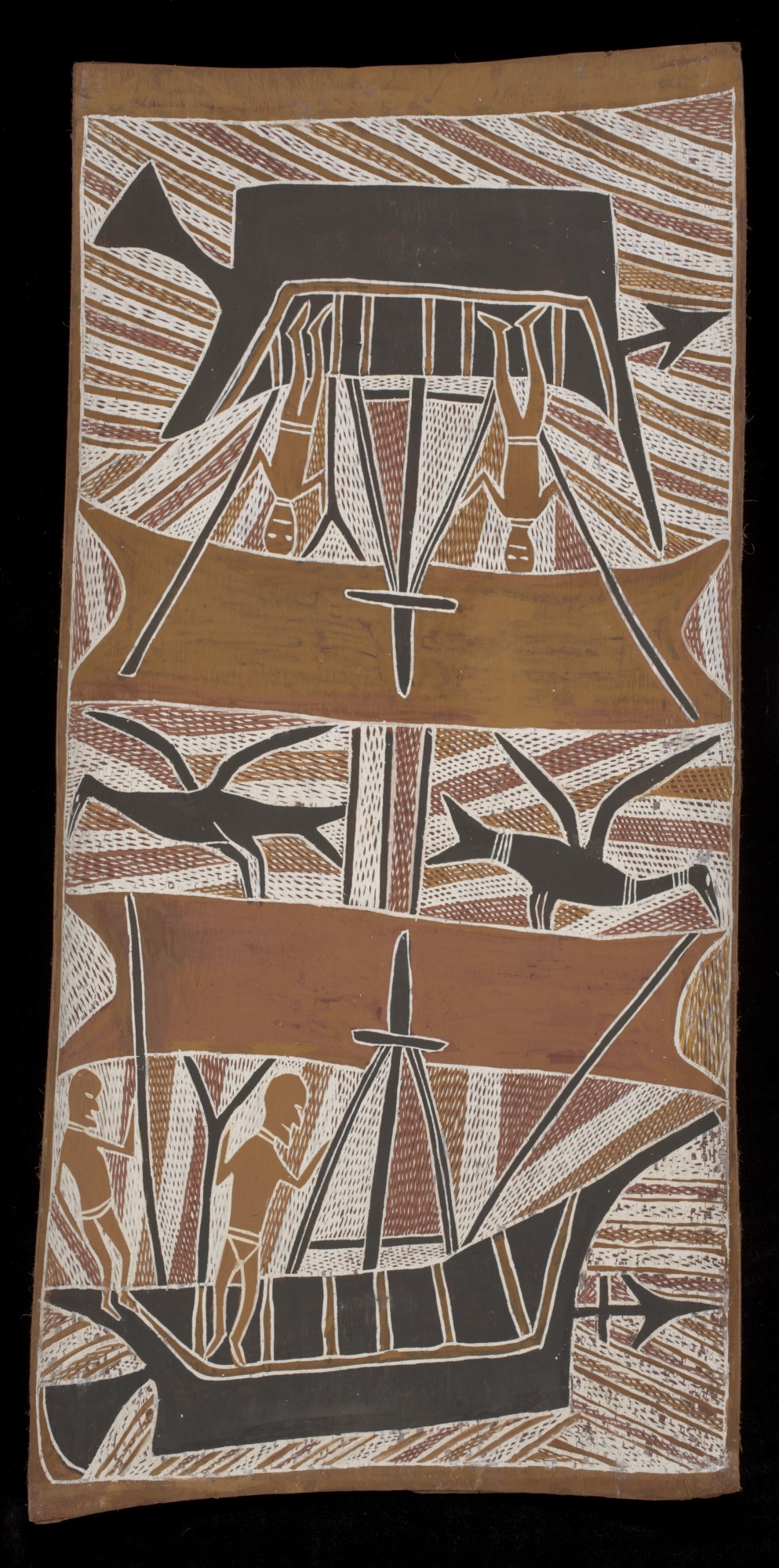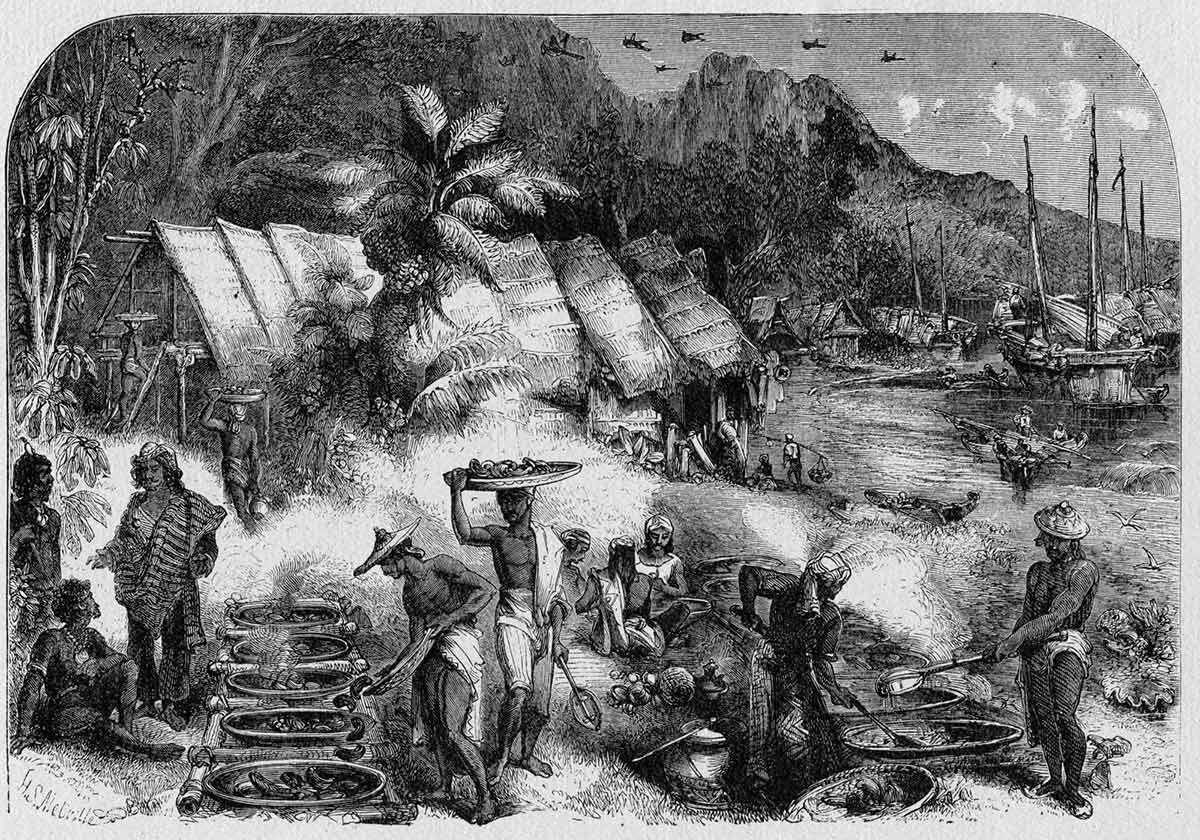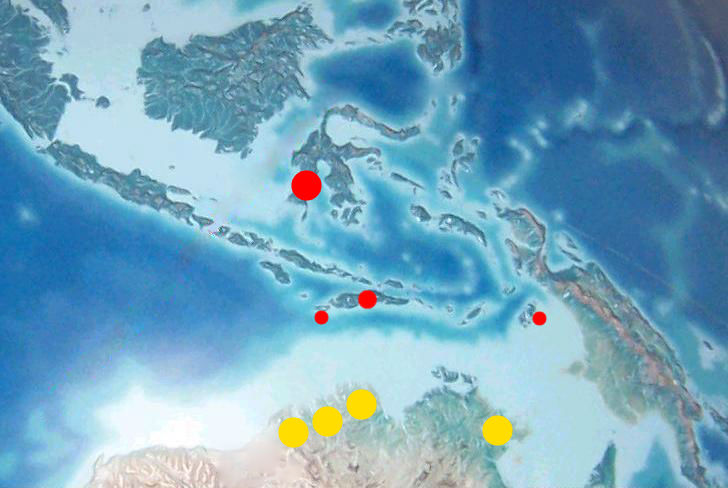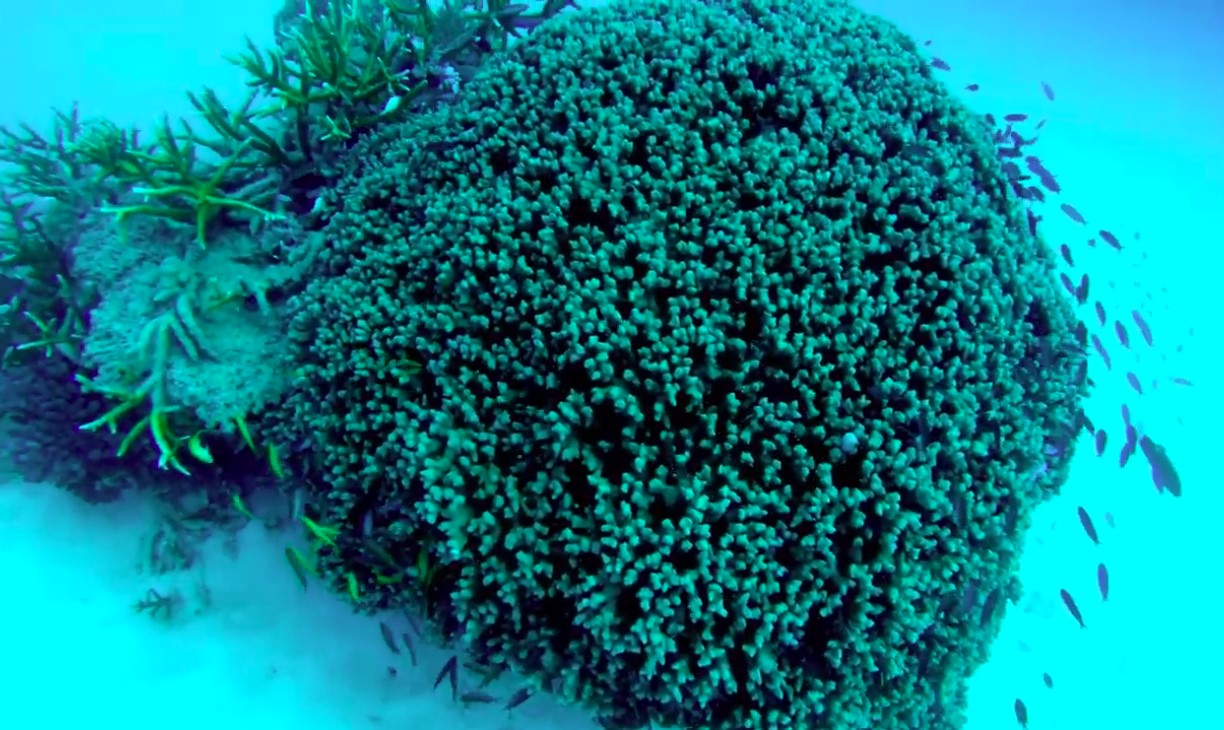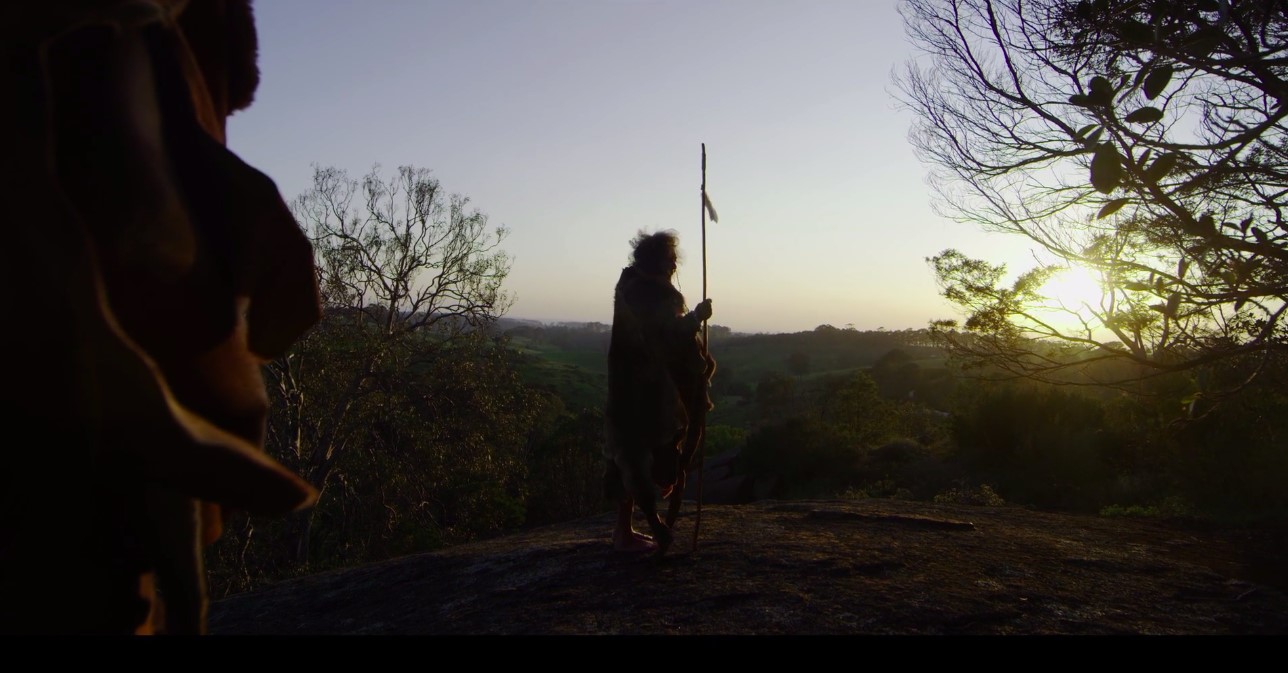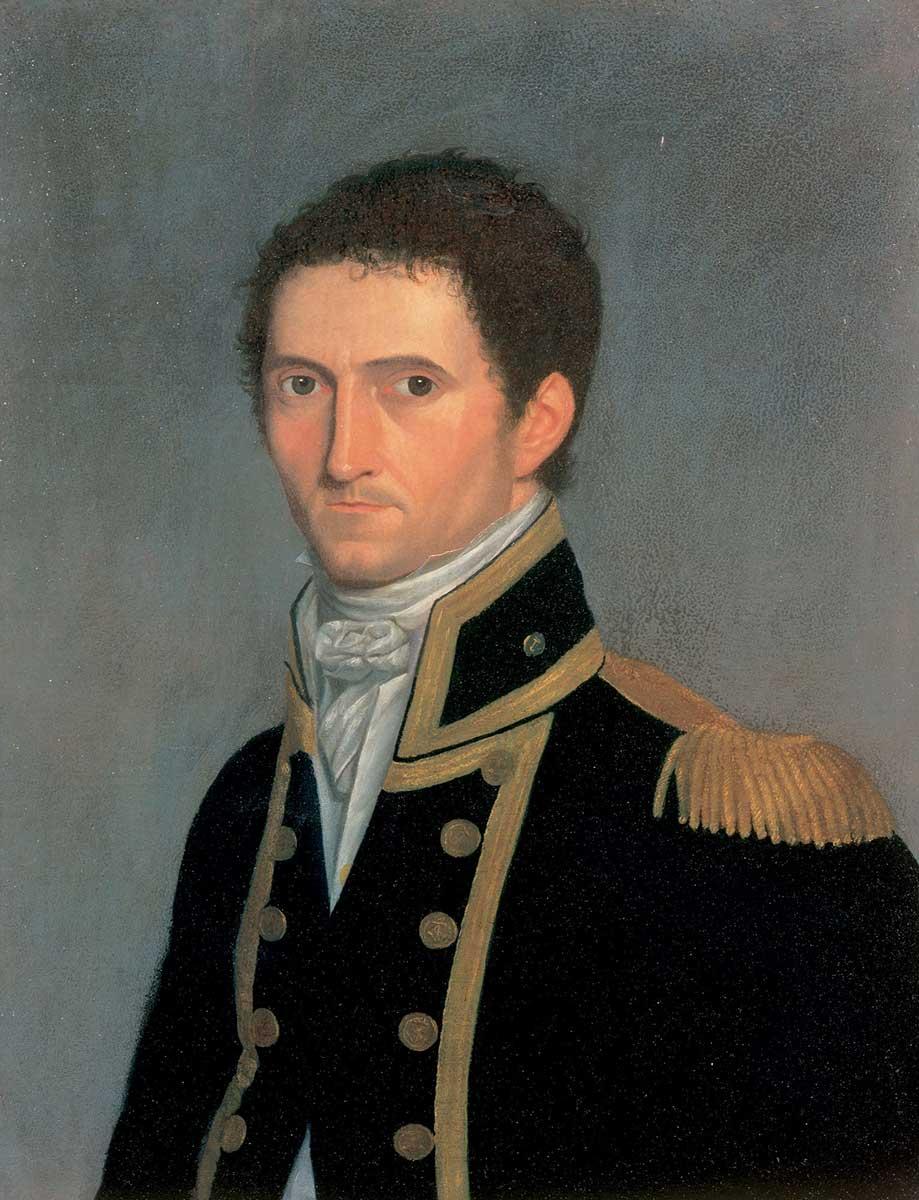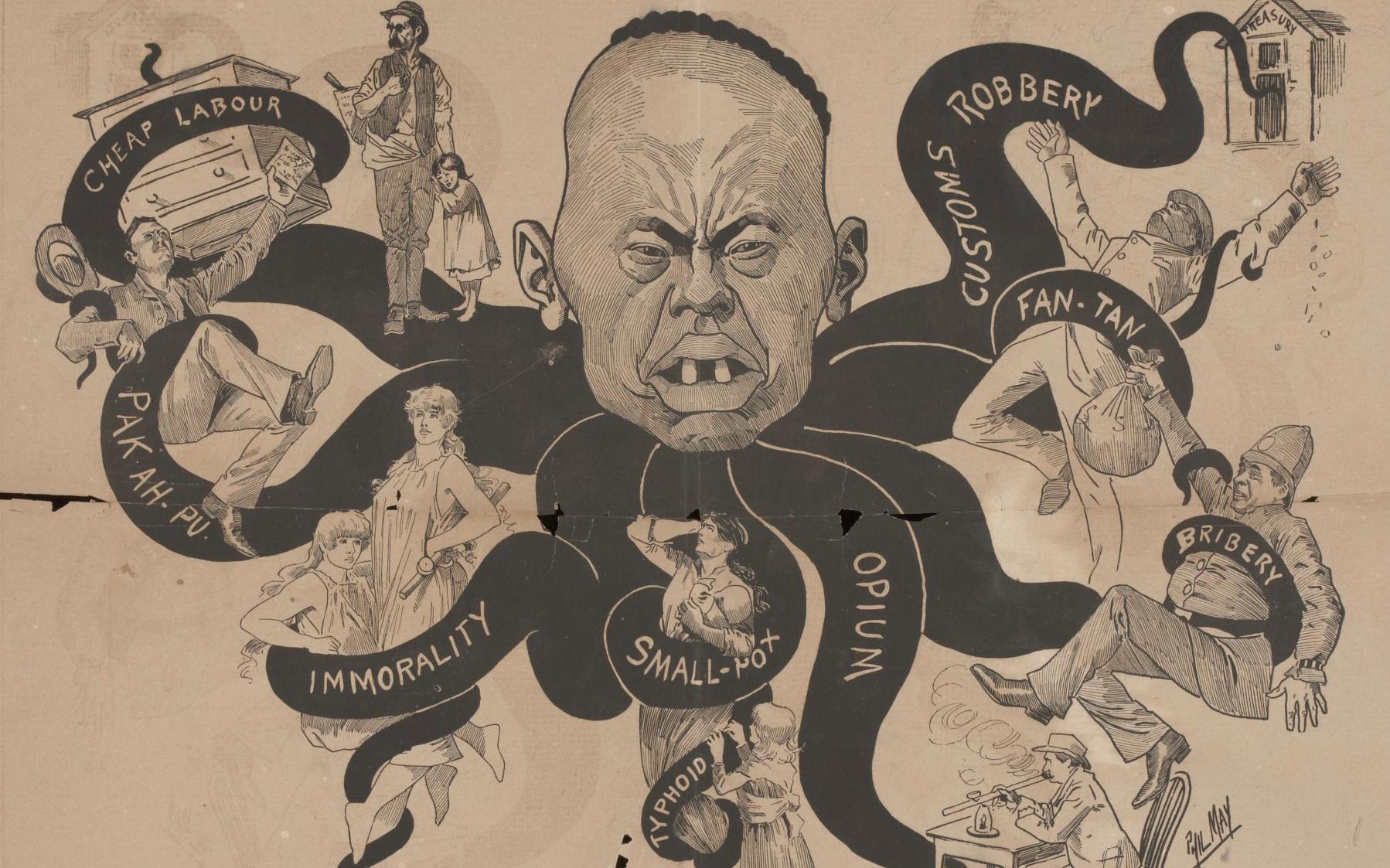Top end trade
1700: Beginning of trade links between Aboriginal people of northern Australia and Makasar from Sulawesi
Top end trade
1700: Beginning of trade links between Aboriginal people of northern Australia and Makasar from Sulawesi
In a snapshot
There was contact between Australia and Asia before Europeans arrived in 1788. From at least 1700 until 1907, hundreds of fishermen sailed each year from the city of Makassar on the island of Sulawesi (now a part of Indonesia) to the Arnhem Land coast in the Northern Territory. The Makasar traded with Aboriginal people for trepang (sea cucumber), which they later sold to China. They didn’t settle in Arnhem Land, but they did have an influence on the local Yolŋu people’s society and culture.
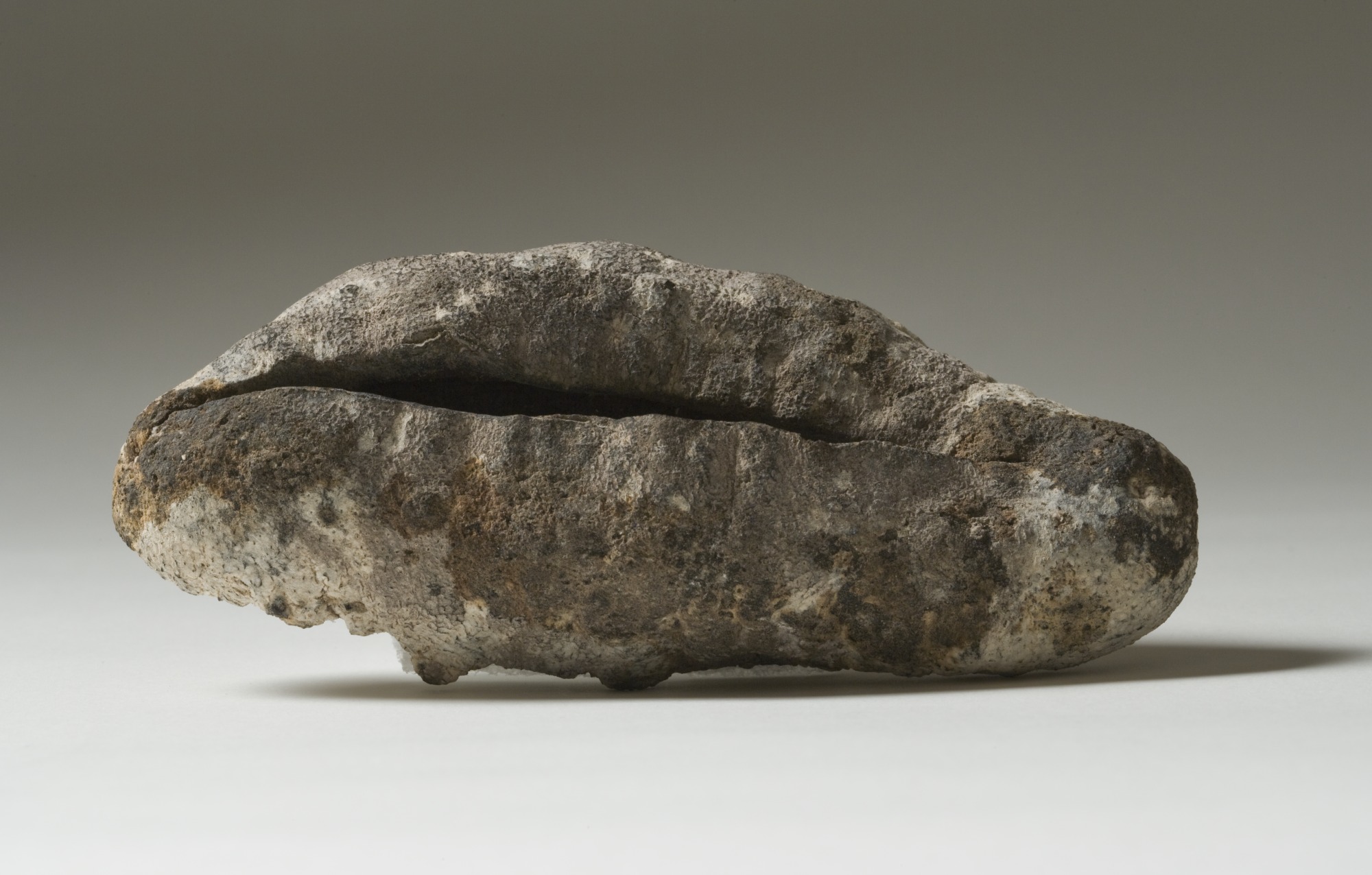
 Can you find out?
Can you find out?
1. Who were the Makasar? When did they first begin to visit northern Australia?
2. Why did the Makasar visit?
3. Which Aboriginal group interacted with the Makasar?
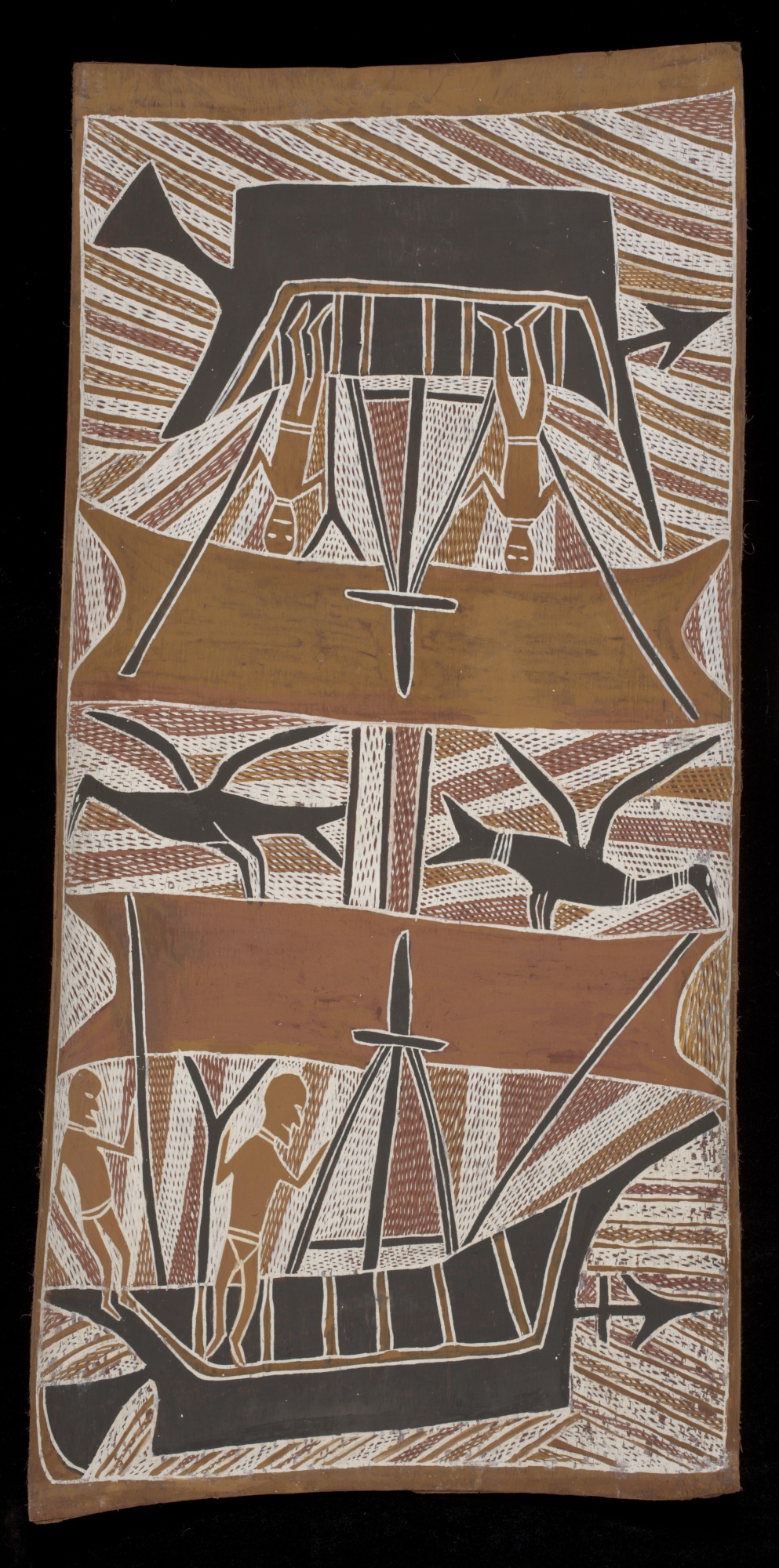
Who were the Makasar, and why did they come to Australia?
For more than 200 years hundreds of Makasar fishermen arrived each December and camped along the Arnhem Land coast. There they caught, boiled and dried trepang. During these visits they met, traded and worked with local Aboriginal people.
The months that the Makasar spent in Australia were busy ones. Fishermen speared the trepang from their praus (boats) or dived down to spike them with heavy harpoons. On the shore, trepang were gutted and boiled in sea water and then buried in hot sand to cool slowly. Later, they were dug up and their chalky skin washed away with salt water. Finally, they were dried in the sun or smoked over a slow fire in huts made of bamboo and mats.
Each April, as the monsoon winds began to blow, the fishermen left, returning to Makassar carrying trepang to be traded with China.
People in China enjoyed eating trepang and believed that it also increased their sexual desires. By the mid-1800s, one-third of all the trepang eaten in China (about 900 tonnes) came from the Arnhem Land trade. Trepang is still used in China as food and medicine.
‘We learned that they were prows from Macassar, and six Malay commanders shortly afterwards came on board in a canoe. The chief of the six prows was a short, elderly man, named Pobassoo; he said there were upon the coast, in sixty divisions, sixty prows…’
How did the Makasar influence Yolŋu people’s lives?
The Makasar introduced the Yolŋu people to calico, tobacco and smoking pipes. They also shared some of their language. For example, the Yolŋu word rrupia (money) was introduced by the Makasar.
Most importantly, the Makasar brought metal to Australia, which transformed Yolŋu life. Metal blades, knives and axes made it easier for Yolŋu to cut their food and make large dugout canoes and complex wooden sculptures.
Research task
Use Google maps to locate the Island of Sulawesi in Indonesia. How far from Arnhem Land is it?
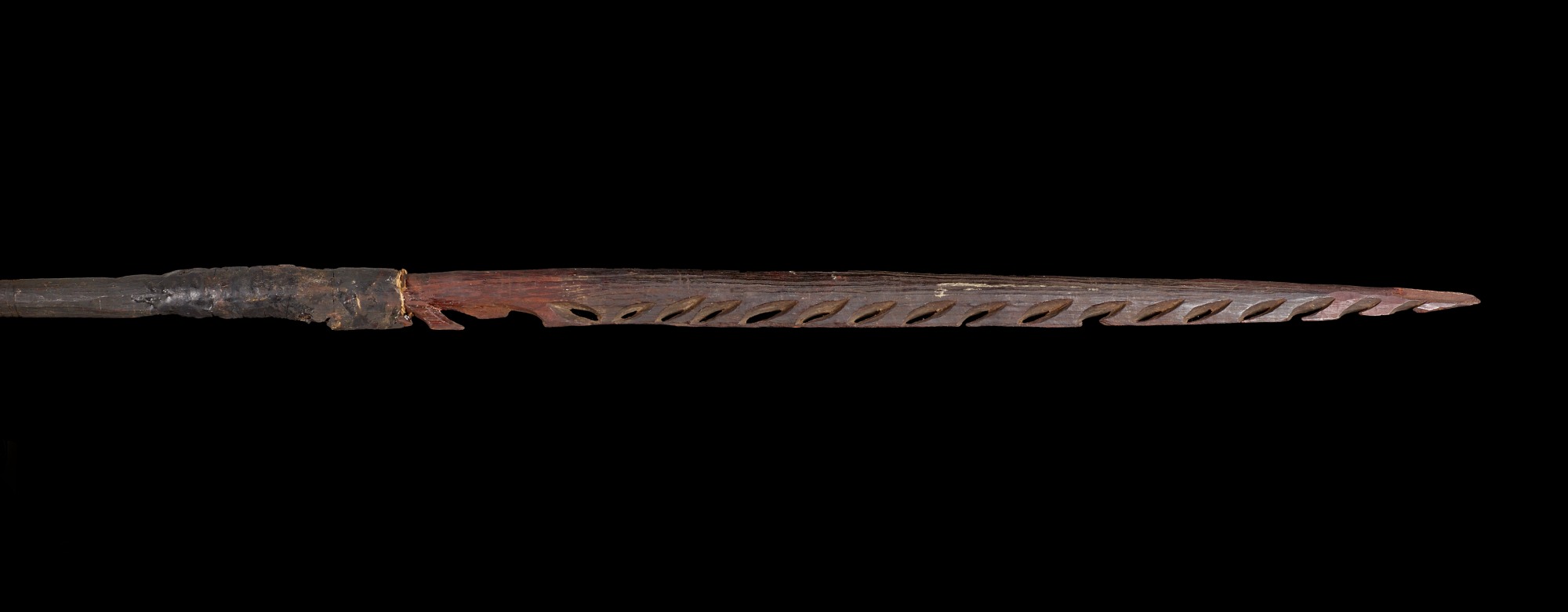
When did trade with Makasar end?
By the end of the 1800s visits from the Makasar were less frequent. After 1901 the new Australian Government banned Makasar trepang fishermen from visiting Arnhem Land. Records show that the last Makasar prau came to Northern Australia in 1907.
A note on spelling: Makassar is used when referring to the place and Makasar when referring to its people. Macassan and Macassar are historic forms, often used in the context of trepangers in northern Australia.
Read a longer version of this Defining Moment on the National Museum of Australia’s website.
 What did you learn?
What did you learn?
1. Who were the Makasar? When did they first begin to visit northern Australia?
2. Why did the Makasar visit?
3. Which Aboriginal group interacted with the Makasar?






